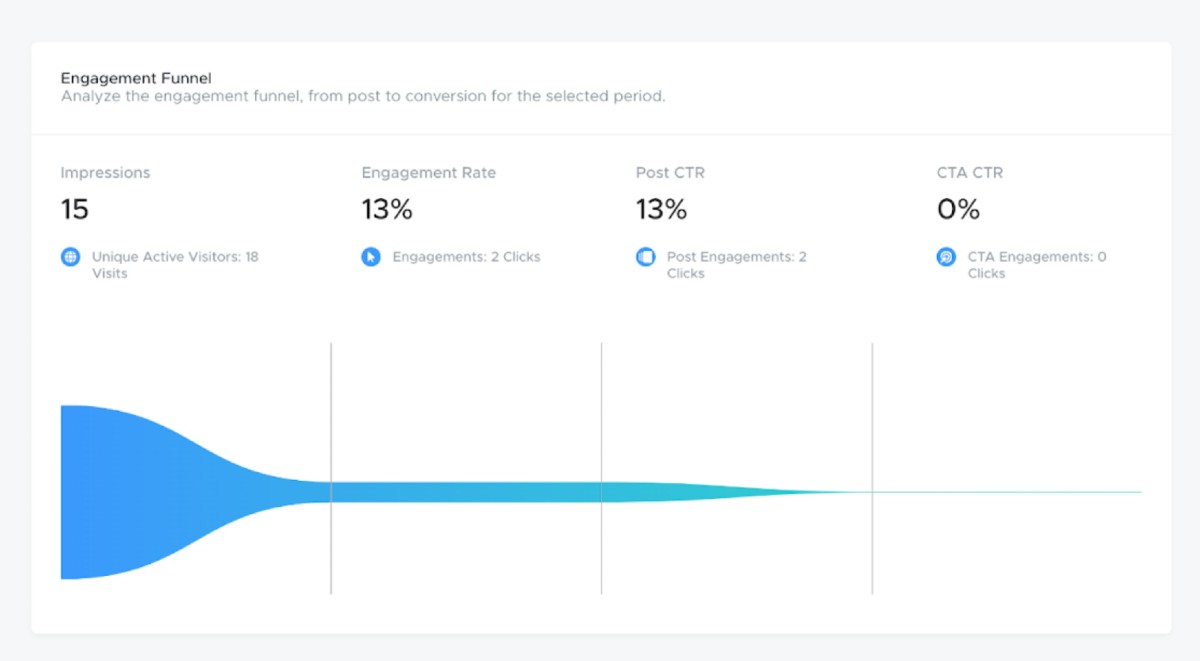Just because your content calendar is filled to the brim doesn’t mean your content strategy will get an ROI. In fact, TINT’s 2023 State of Social & User-Generated Content report revealed that 82% of marketers admitted they don’t always measure the performance of their content across marketing channels.
Content strategy is more than publishing two tweets, one LinkedIn post, one Instagram Reel, and one TikTok a day.
Throwing content to your audience and hoping they like it isn’t a strategy. Ross Simmonds pokes fun while pointing out the truth in his tweet reminding marketers that content calendars aren’t a content marketing strategy.
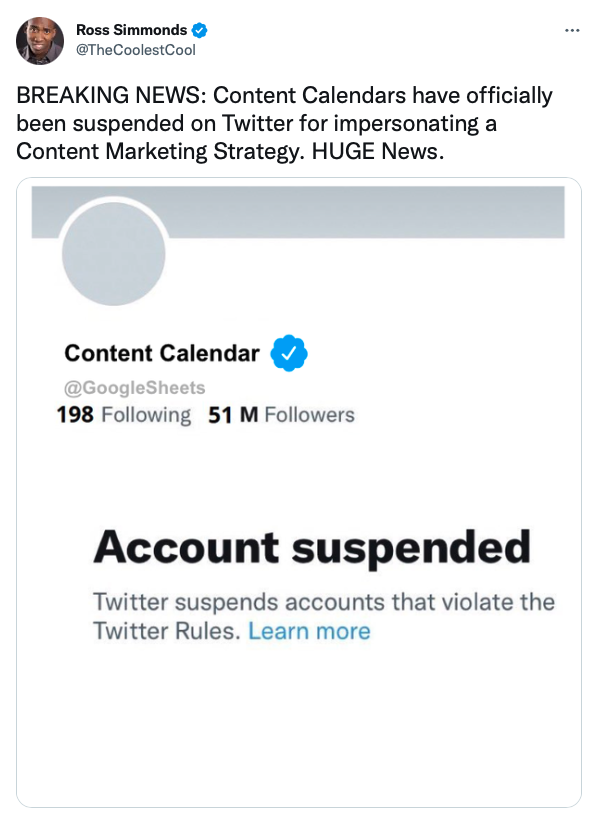
Insights and analytics are the sidekicks that every content marketing strategy needs if it wants to succeed. In this case, success is defined as a growth in brand awareness, followers, engagement, email subscribers, and customers.
It’s time to round up those sidekicks.
What are Social Content Insights & Analytics?
Without social media content insights and analytics, it’s impossible to have a content strategy. The good news is over 54% of marketers feel like their team has the methodology to know what visual content will convert across marketing channels.
Brands that don’t measure metrics are acting as newbie creators. They’re putting out content and hoping it works. Instead, they need to focus on figuring out what works best and continuing to optimize it.
A great content marketing strategy is built on insights and analytics.
That’s because these content insights and analytics are one of the many lines of communication you have with your audience and customers. What makes this communication line special is that you get an unbiased look into their behavior.
Unlike sending out a survey and getting the opinions of your audience and customers (which is also valuable), insights and analytics tell you what’s actually going on. Your audience might request a specific type of content in surveys, but not actually consume the content when you publish it.
Insights and analytics tell you what’s working, what’s not working, and where to steer your content marketing strategy.
Insights and analytics both tell stories about your audience and customers. Here’s how to figure out what they’re telling you.
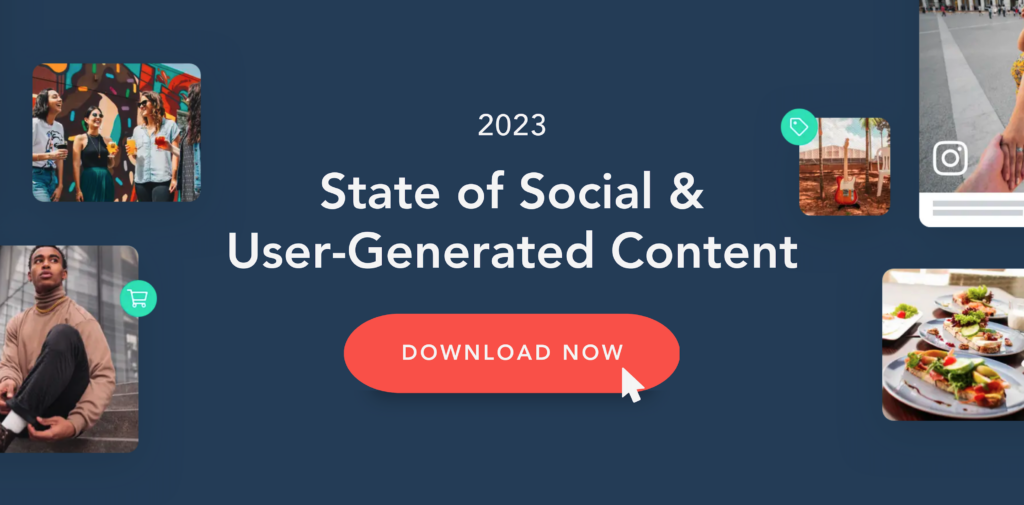
What’s the Difference between Insights and Analytics?
Insights are observational. In the story of your content strategy, they’re setting up the scene. Content insights tell you:
- The days and times that your audience engages with your content the most
- How much content your audience and customers are posting about your brand and products
- The days and times your buyers are posting the most amount of content
- Your top marketing channels
- The types of content your audience engages with the most
- Which devices your buyers primarily use
Analytics are strategic. In the story of your content strategy, they’re playing out the plot. Content analytics tell you:
- How many people clicked on your CTA this week
- How much growth you’ve had on your Twitter account
- How many people created UGC about your latest product after your contest
- How your engagement funnel is working
- The monetary value of your content
Insights are essential to setting up your content marketing strategy while analytics are key to ensuring it creates an ROI.
If you’re not measuring both, unfortunately, you have a content calendar, not a content strategy.
Content Insights and Analytics Every Marketer Needs to Know
Content marketing strategies need both insights and analytics to thrive. Without insights, you can’t figure out which analytics to focus your time and money on. Without analytics, you have no idea how well your content is performing.
Make sure you’re keeping track of all of these insights and analytics for a holistic content marketing strategy that generates results.
Content Insights
Content insights are an overview of your content. They set the scene for your content marketing strategy by telling you what’s currently going on. TINT measures insights like total posts ingested and breaks that down into posts ingested per day and time of day.
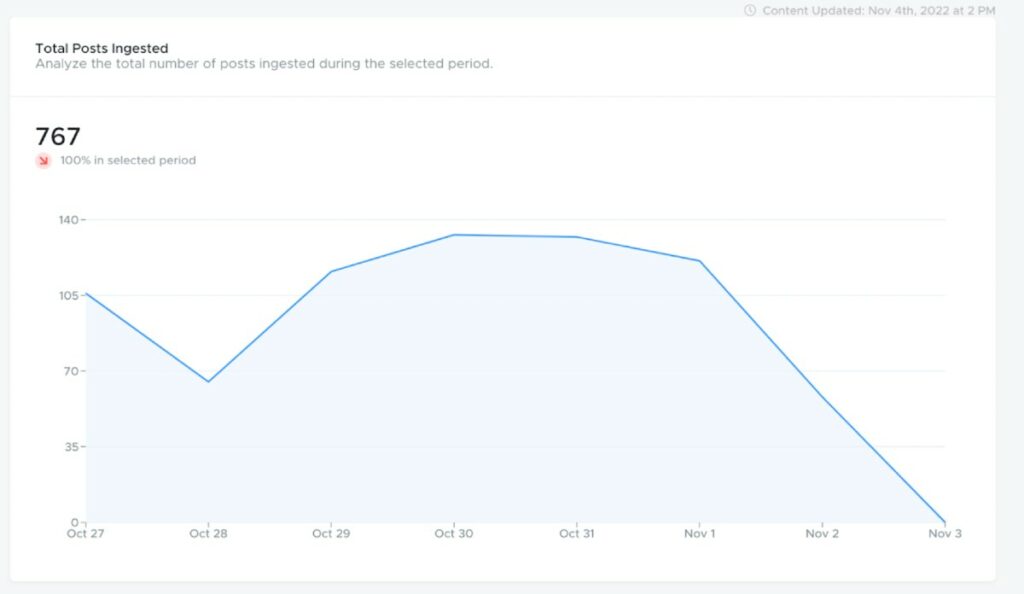
For companies strategically using the highly engaging and converting power of user-generated content, these metrics are incredibly important. Without these metrics, you won’t know how much content your audience and buyers are producing. By observing what your fans are up to you can figure out where you want to steer your content ship.
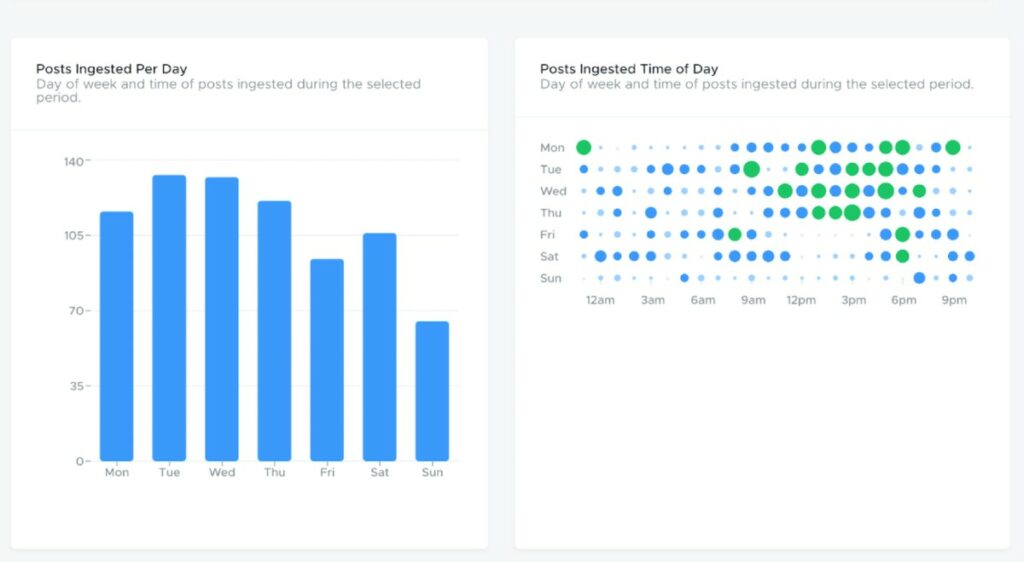
If your audience is creating UGC primarily in the mornings, how can you create a UGC campaign around their morning routines? For example, a coffee brand can build a contest asking customers to share their morning coffee routines for a prize of 6-months of free coffee.
Using their content insights, they might also see that their second largest UGC hit comes around 12 pm when people want a little bit more caffeine. This observation tells them that they can create a UGC contest asking buyers to share their afternoon coffee routines as well.
Their content insights connected them with buyers who also want an afternoon coffee which the brand can add messaging for in their marketing copy. They can take the morning UGC and afternoon UGC collected and share them across their marketing channels at the appropriate time of day. They can run time-specific Facebook ads during the afternoons that share how buyers are excitedly making their second cup of coffee.
Which content insights are crucial in setting the scene for your content marketing strategy?
Content Performance Insights
Content performance insights look at your funnel to see what’s actually happening. They’re the author describing the setting of the story before diving into the logistics of the plot (analytics). TINT’s Engagement Funnel shows you how many impressions your content received, and how that turned into engagement, post-click-throughs, and call-to-action click-throughs.
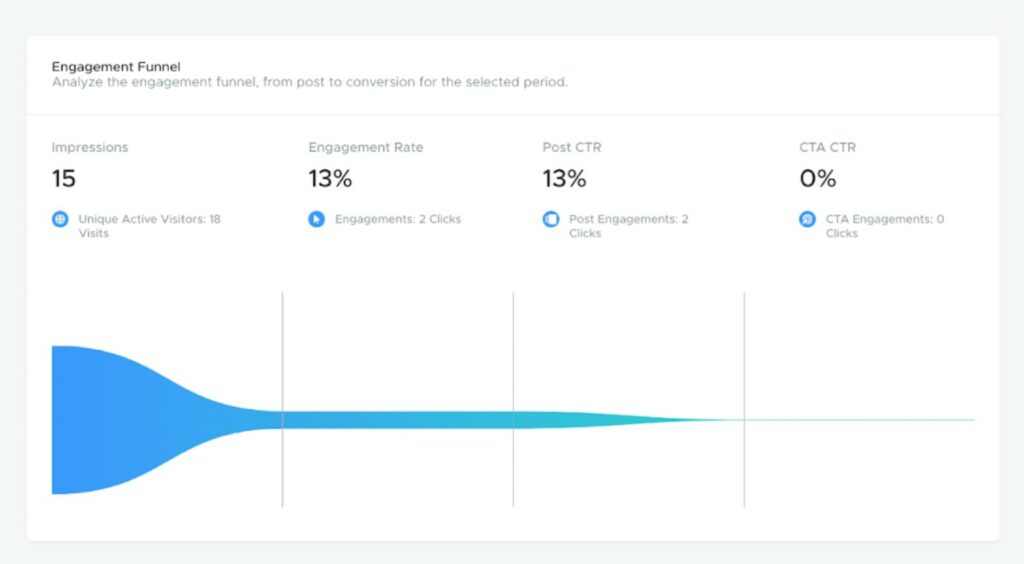
These insights tell you what’s happening in your content marketing strategy so you can decide where to steer your ship. Do you need to increase your impressions? Or do you have plenty of impressions but your post-click-through rate is really low? Your answers to these questions will determine the analytics that you need to prioritize.
For example, if your impressions are too low — you’re looking to create content that’s more shareable. If your click-through rate is too low — you’ll want to test out CTAs to figure out what works best for your audience. This is when you start to intellectually enter the analytics part of your content marketing strategy thanks to your content insights.
Content ROI Insights
What if you could predict how much revenue the user-generated content and brand-created content you’re posting would make you? That’d be a pretty sweet deal right? Content Return-on-Investment insights are another part of your story’s scene. They tell you if it’s raining (your estimated value is low) or if it’s a blue, sunny sky (your estimated value is high).
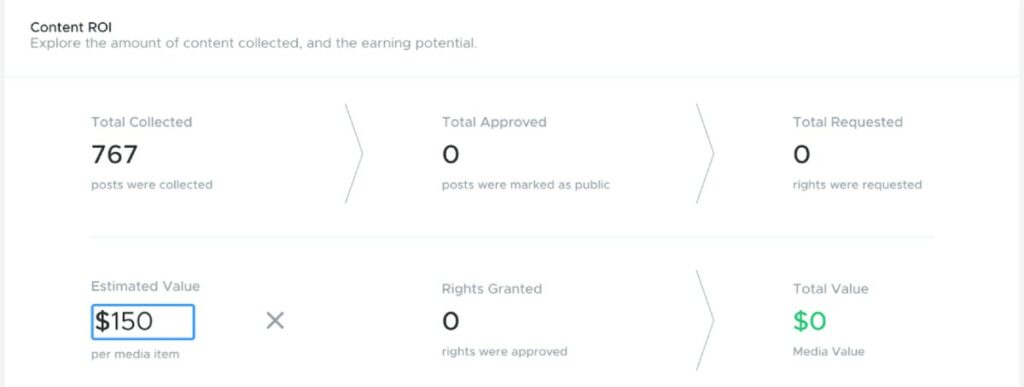
Based on your Content ROI and your margins you can figure out where you need to head from here. Is your Content ROI exactly where it needs to be and do you need to make sure to keep it there? Or is your Content ROI too low that it’s reducing your margins? This is the last of your Content Insights that you’ll need to create a strategic plan to start diving into analytics.
Top Clicked Posts
Top-clicked posts are one of the many analytics you need to keep tabs on in your content marketing strategy. This analysis tells you something really special: what your audience cares the most about. It’s like having your audience personally text you and let you know what they want to see more of. Pretty convenient, huh?
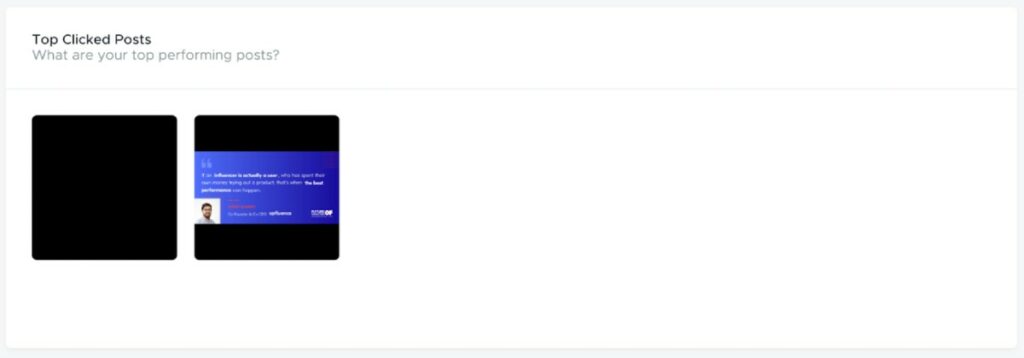
Your goal is to post more content similar to your top-clicked posts. Did your audience love an unboxing video from one of your customers? Did the influencer post you paid for outperform the UGC you collected in your UGC Studio? Was employee-generated content your top-performing post of the week?
Your top-performing post tells you exactly what to create more of. It’s the plot of your content marketing storytelling you what’s going to happen next. Use top-performing posts to ask your audience to create more posts like it through TINT’s Experience Builder (you can create contests, sweepstakes, and more).
Embed Views and Clicks
Video is currently the reigning ruler of the content world. This makes understanding your audience’s behavior with your embedded content a massively important analytic. Knowing which content makes them stick around tells you what to create more of.
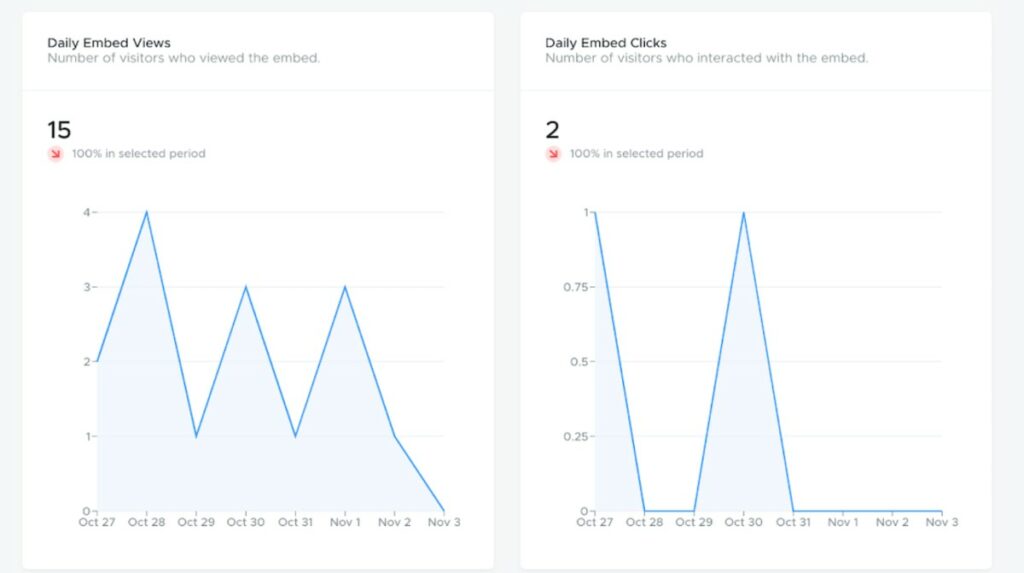
Are UGC videos getting more views and clicks? If that’s the case, it’s clear that your content marketing strategy needs more UGC in your content calendar. Better yet, it needs more specific UGC around your current product campaigns. Ask your audience to create content specific to a new product, a buying objection, or an upcoming holiday.
Automatically have that UGC land in your UGC Studio, ask for rights, and publish it without needing to add manual tasks to your marketing team’s to-do list with TINT.
Engagement Type
Engagement type tells you what type of content your audience engages with the most. It also tells you which device they use most often. Knowing if your audience prefers videos to text or using their computer over mobile tells you what to generate more of.
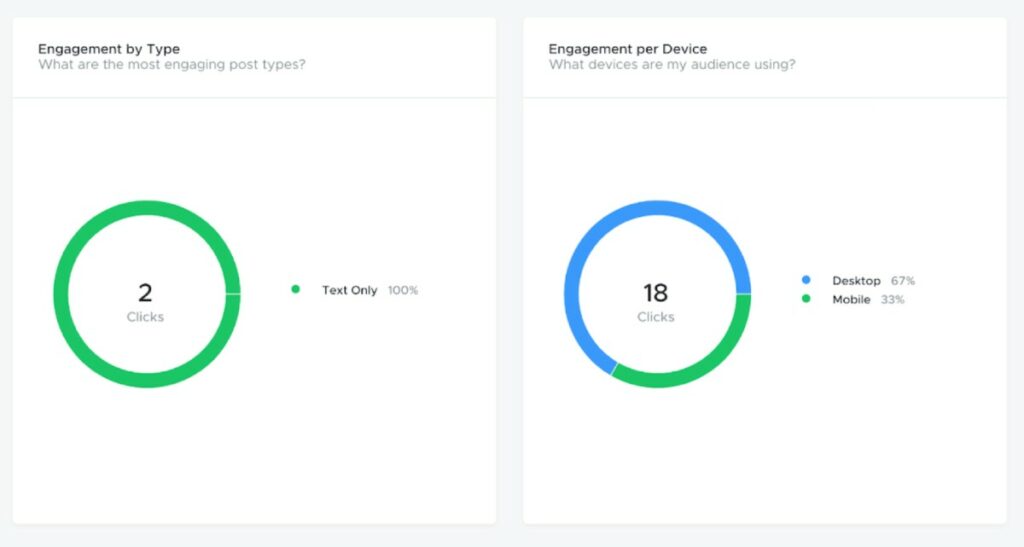
Is it more beneficial to bring in UGC videos or photos? Does your audience prefer 1080 pixels wide by 1920 pixels videos because they’re primarily using mobile? These questions meet your buyers where they are. They do the work of figuring out what type of content to create so you can focus on asking your audience for it, having employees create EGC, and making brand-created content as necessary.
Don’t Sleep on Insights and Analytics
Without the proper insights and analytics set up, your content marketing strategy will flop. You won’t figure out why a post worked so well and how to replicate the results. Worse, you’ll tire out your audience as you try new content formats and topics that aren’t what they’re looking for.
Your insights and analytics tell you exactly what your audience and buyers are looking for. No guessing and less money wasted on ideas that don’t generate ROIs.
Get access to all of these insights through TINT’s platform. Start your free trial today.

